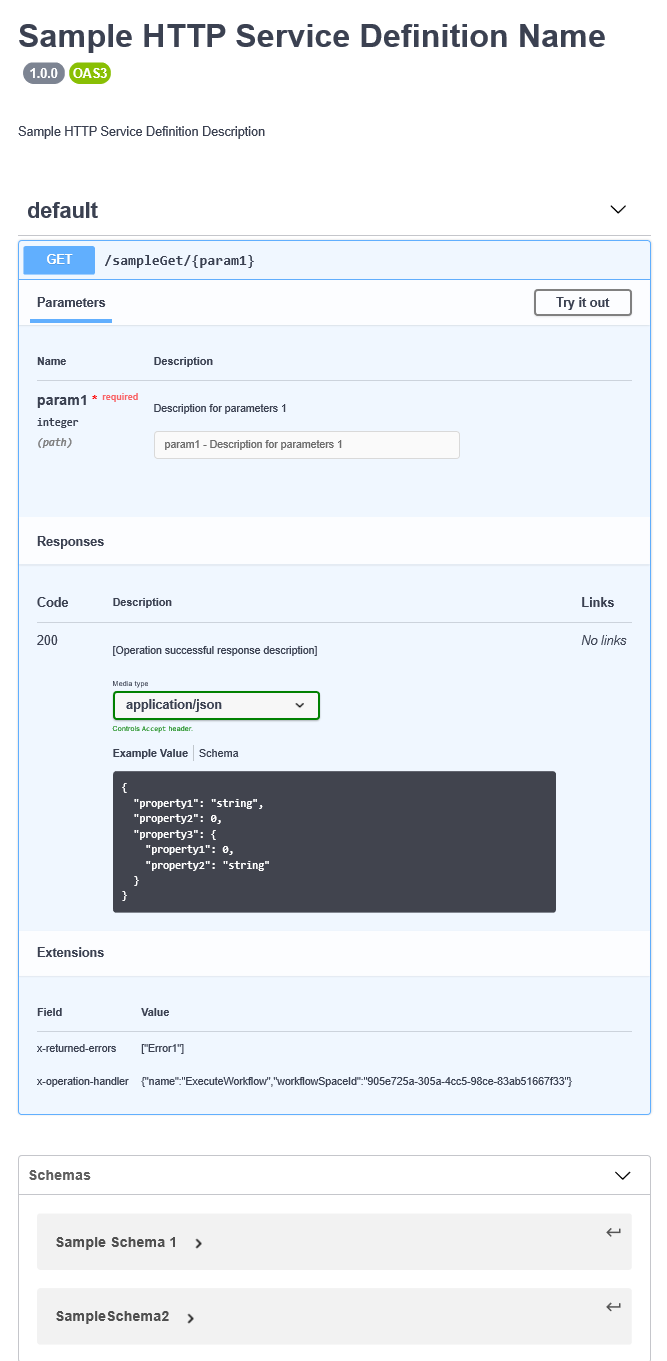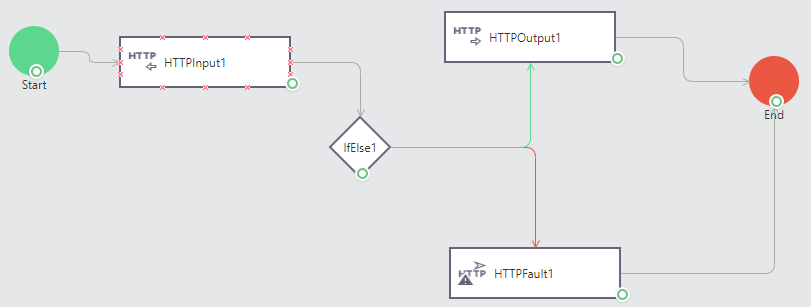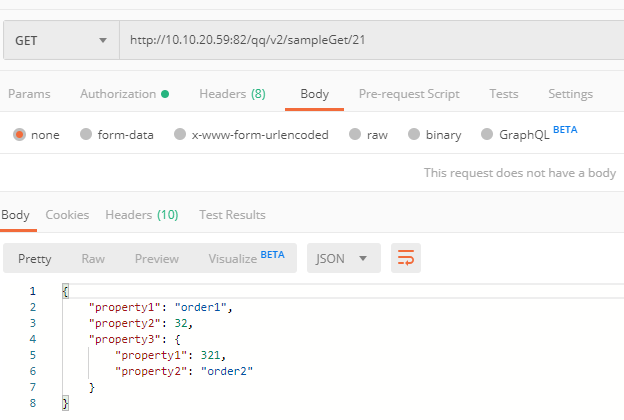Below is a sample HTTP service with GET method.
# Open API 3.0 reference - Link: https://swagger.io/docs/specification/about/
openapi: '3.0.0'
info:
# Document title
title: 'Sample HTTP Service Definition Name'
# Document description
description: 'Sample HTTP Service Definition Description'
# Document version
version: '1.0.0'
paths:
# Sample HTTP GET operation with path parameter {id}
/sampleGet/{param1}:
get:
parameters:
- name: param1
in: path
description: 'Description for parameters 1'
required: true
schema:
type: integer
responses:
'200':
description: '[Operation successful response description]'
content:
application/json:
schema:
$ref: '#/components/schemas/SampleSchema2'
x-returned-errors:
- Error1
x-operation-handler:
name: ExecuteWorkflow
workflowSpaceId: '905e725a-305a-4cc5-98ce-83ab51667f33'
x-error-catalog:
# Sample error 1
- id: Error1
code: ErrCode1
title: 'Error 1 title'
status: 400
message: 'Error 1 message: {arg1}, {arg2}.'
messageParameters:
- name: arg1
- name: arg2
# Sample error 2
- id: Error2
code: ErrCode2
title: 'Error 2 title'
status: 410
message: 'Error 2 message.'
components:
schemas:
# Sample schema 1:
SampleSchema1:
title: 'Sample Schema 1'
type: object
properties:
property1:
type: integer
property2:
type: string
# Sample schema 2
SampleSchema2:
type: object
properties:
property1:
type: string
property2:
type: integer
property3:
$ref: '#/components/schemas/SampleSchema1'
required:
- property1
- property3The right panel on Swagger displays the following UI format for the above YAML code sample:

After creating an HTTP listener, add the HTTP Input, Output and Fault activities to your workflow, from which The HTTP service is to be initiated, and bind these activities to the above YAML HTTP listener.

After all the bindings, hit the GET API with parameter as 21. The API goes to HTTP output activity and shows the following result:

For any parameter other than 21, the API goes to the HTTP fault activity and shows the following result:

